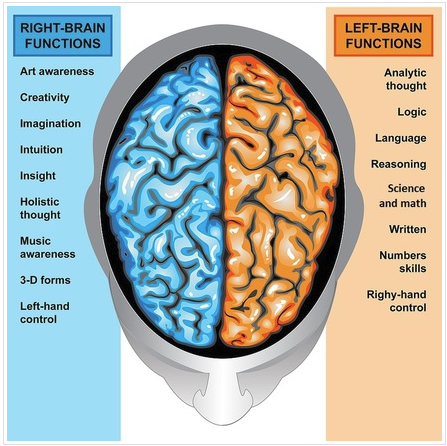
Poached not Scrambled: Train Your Brain
 Why is it that some people appear to find it easier to make a pleasing photographic composition than others?
Why is it that some people appear to find it easier to make a pleasing photographic composition than others?
Well, it seems we all have two ways of thinking - verbal, analytical, sequential and visual, perceptual, simultaneous. Broadly speaking the left part of our brain is responsible for the former and the right part is responsible for the latter.
The problem is that In the western world, the range of subjects we are taught from an early age focusses more on needing to use the left part of our brain (what I would call the academic side) than the right (the artistic side), which might be the very reason some people struggle when it comes to composition. I come across this a lot when running photography workshops. I will often hear participants complimenting another on their photograph and wishing they'd found it themselves - when they may have only been stood a very short distance from the other participant when they took it.
Train your brain
Well, if this all sounds familiar, don't despair because you can train your brain so that you can find more pleasing compositions more often
(although please bear in mind that composition is, and should be, subjective and personal to the person taking the picture).
On my residential workshops, I teach a method I call 'poached, not scrambled' - an easy way to remember how to go about training your brain to find more pleasing compositions more often (poached meaning two eggs resembling the left and right side of your brain and scrambled meaning when you mix the two). Quite simply, what I try to get across is that when you're looking for something to take a picture of you are mainly using the right part of your brain to do so, which is good of course. However, once you've found a composition you immediately start to think about how you're going to take the picture. Unfortunately, this technical side of taking pictures uses your left part of the brain - therefore scrambling your thought process.
Remember... and carry on
 The answer to the problem is very simple and one that I've trained myself to do over the years. Once I have found a composition I like, I will remember the point I found it - I might even place a stick in the ground (if I'm in woodland for instance) or a marker in the sand (if I'm on a beach) etc...Then, instead of getting my camera out I will carry on looking for other compositions - again placing a marker when I've found one. I try to force myself to do this for at least 15 to 20 minutes or longer as I know it improves my compositional skills. Once I feel I've exhausted all compositional options (or that I need to make an image whilst the light, or other elements are right) I then consider how I am going take the picture/s with my camera. This is the technical side of photography and therefore utilises the left part of the brain. Using my 'poached, not scrambled' analogy, I'm keeping the left and right part of my brain separate so that the artistic side is of just as much an influence on my photography as my technical side - leading to more pleasing compositions more often.
The answer to the problem is very simple and one that I've trained myself to do over the years. Once I have found a composition I like, I will remember the point I found it - I might even place a stick in the ground (if I'm in woodland for instance) or a marker in the sand (if I'm on a beach) etc...Then, instead of getting my camera out I will carry on looking for other compositions - again placing a marker when I've found one. I try to force myself to do this for at least 15 to 20 minutes or longer as I know it improves my compositional skills. Once I feel I've exhausted all compositional options (or that I need to make an image whilst the light, or other elements are right) I then consider how I am going take the picture/s with my camera. This is the technical side of photography and therefore utilises the left part of the brain. Using my 'poached, not scrambled' analogy, I'm keeping the left and right part of my brain separate so that the artistic side is of just as much an influence on my photography as my technical side - leading to more pleasing compositions more often.
To back up this theory, I have found over the years that whenever participants arrive on a residential workshop, more often than not at the beginning of the workshop they are 'rusty' when trying to find a composition they like whereas after a few days they are starting to find compositions a lot more readily. This is because during a residential workshop we discuss photography, composition and look at images and prints every day, stimulating the very part of your brain that needs it. The right, or artistic, side.
So, if you are new to landscape photography or really struggle to find suitable compositions, try using the technique above and let me know how you get on in due course.